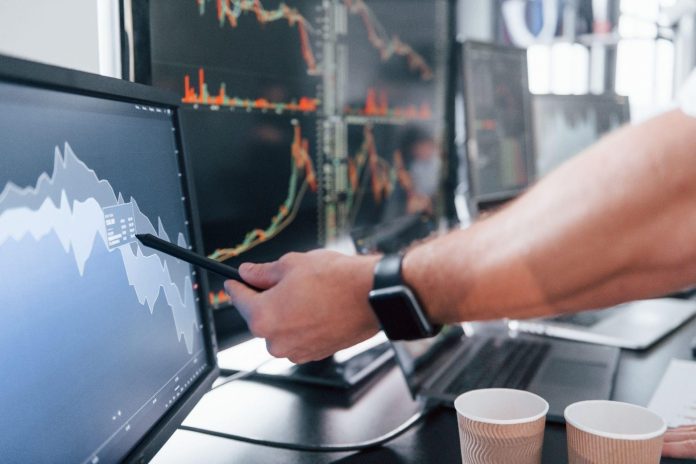In today’s digital age, banking and financial institutions are rapidly adopting Software-as-a-Service (SaaS) solutions to streamline operations, reduce costs, and improve customer experiences.
But with sensitive financial data involved, one big question always arises — how secure is SaaS, especially in banking? Let’s break it down in simple terms.
What Is SaaS Banking Software?
SaaS banking software is a cloud-based system that allows banks and financial institutions to manage services like customer onboarding, payments, loan processing, and compliance — all through an online platform. Unlike traditional systems that run on in-house servers, z are hosted on external cloud infrastructure and accessed via the internet.
This shift provides flexibility, scalability, and cost efficiency. However, it also introduces new challenges — mainly data security and privacy.
The Layers of SaaS Security
Modern SaaS banking platforms are built with multiple layers of protection to keep financial data safe.
Here’s how they ensure security from every angle:
1. Data Encryption
Every transaction and piece of information is encrypted both during transfer and while stored on the cloud. Encryption converts data into unreadable code, ensuring that even if hackers intercept it, they can’t make sense of it. This is similar to locking your valuables in a vault that only the right key can open.
2. Access Control and Authentication
SaaS banking software limits who can access specific data. Features like multi-factor authentication (MFA), role-based access control, and biometric verification add extra layers of defense. This ensures only authorized users, such as bank employees or clients, can enter the system.
3. Regular Security Audits
Top SaaS providers perform continuous monitoring and third-party audits. These reviews help identify vulnerabilities before they can be exploited. It’s like having a 24/7 security team checking every lock, gate, and door in your digital bank.
4. Regulatory Compliance
In banking, compliance isn’t optional — it’s mandatory. SaaS banking software adheres to strict standards such as:
- ISO/IEC 27001 for information security management
- GDPR for data privacy (in Europe)
- PCI-DSS for secure payment processing
By following these frameworks, SaaS providers guarantee that their systems meet global financial security standards.
5. Disaster Recovery and Data Backups
Unlike on-premise systems that may lose data during failures, SaaS solutions automatically back up everything across multiple servers in different regions. This redundancy ensures that even in case of a cyberattack or outage, data remains safe and can be restored quickly.
Addressing Common Security Concerns
Despite the strong security measures, some financial institutions still worry about the cloud. Let’s address a few common concerns.
Data Ownership
Banks always retain ownership of their customer data, even when it’s stored in the SaaS provider’s cloud. The provider’s job is to host and protect it — not to control or sell it.
Third-Party Risks
Reputable SaaS banking vendors carefully vet their infrastructure partners, such as Amazon Web Services (AWS) or Microsoft Azure, to ensure top-level security. These cloud giants have advanced threat detection systems, firewalls, and compliance certifications that further strengthen security.
Insider Threats
Access restrictions and logging mechanisms track every activity within the platform. This transparency makes it nearly impossible for any unauthorized employee to misuse or leak data without being noticed.
Why SaaS Banking Software Is Actually Safer
When compared to traditional banking systems, SaaS can often be more secure. On-premise servers rely on internal IT teams to update, patch, and monitor systems. In contrast, SaaS vendors handle these tasks automatically and continuously, closing any potential security gaps faster than most in-house teams can.
Moreover, with machine learning-based threat detection, modern SaaS platforms can identify suspicious patterns — such as abnormal login attempts or unusual transaction volumes — and react instantly to prevent fraud.
Final Thoughts
So, how secure is SaaS? When implemented properly, SaaS banking software is one of the most secure and efficient technologies available for financial institutions today. With strong encryption, strict access control, compliance standards, and real-time monitoring, it protects customer data far better than outdated systems.
Banks and fintech companies looking to modernize their operations can confidently move to SaaS — not just for the convenience it offers, but for the enhanced security it brings to every transaction, every customer, and every byte of data.
In the evolving world of digital banking, security isn’t just a feature — it’s the foundation of trust.



 Bitcoin
Bitcoin  Ethereum
Ethereum  Tether
Tether  XRP
XRP  USDC
USDC  Solana
Solana  TRON
TRON  Lido Staked Ether
Lido Staked Ether  Cardano
Cardano  Avalanche
Avalanche  Toncoin
Toncoin